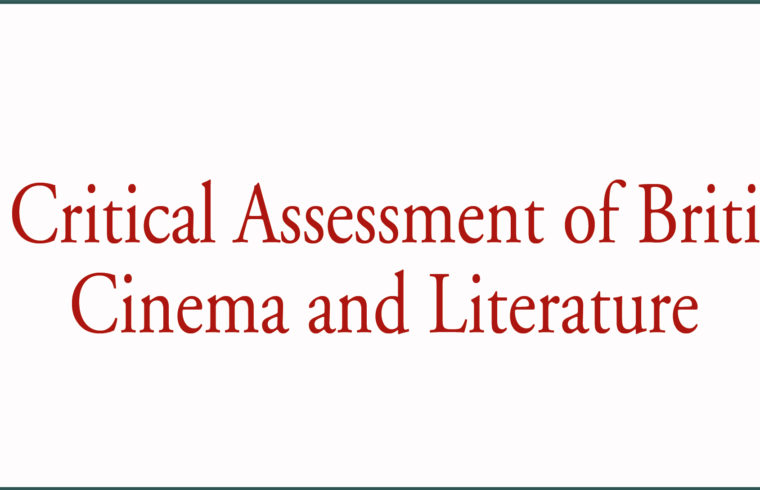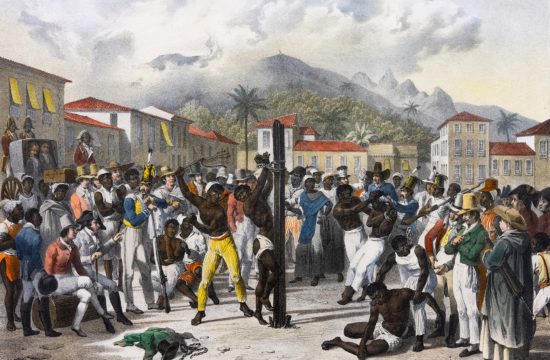Pape Mawade Sylla
Dr. in English Literature, Cheikh Anta Diop University of Dakar – docsylla@outlook.com – SENEGAL
Introduction
As a rule, the two terms British and cinema do not seem to go together. François Truffaut and Hitchcock represent two types of approaches, on the one hand a conventional wisdom about British cinema and the contradictions which reveal the formal characteristics of British cinema. The British cinema conveys a realistic image in so far as actors observe the reality of the characters. It is also filmic in the way it uses a unique camera movement; theatrical as a link between the film and the theatre, both located in London. In America there is a bipolarization; Los Angeles for the film and New York for the theatre.
The present article is an attempt to disclose the repression of love and lack of sensitiveness for the middle-class and, but still representing the English, and, the interests of the middle – class. This paradox in the British cinema will be analyzed by showing the formal contradictions of filmic aesthetics and the repression in the British films such as: Brief Encounterand I Know Where I’m Going. Ultimately these should help understand the aesthetics and symbolic aspects of British cinema and literature.
1. The Formal Contradictions of
Filmic Aesthetic
The British cinema is important in so far as it reveals an aesthetic and symbolic aspect. So its space is organized. These fi lmic devices are exemplifi ed in the movement of the camera. As a case in point, Brief Encounter is the prototype of British cinema for some people, but seen by others as a bad prototype due to its limitations to middle-class culture. It is based on a play by Noel Coward (Still Life, 1938-39) and directed by David Lean. The movie tells the story of a short-lived affair between a married woman and a married man. The two meet at a train station. Location and space play an important part in telling a story, and in this particular case, the location, a waiting room of a suburban railway station; as a result, the trains play important role in unfolding and telling the narrative. The story begins and ends at a train station. Laura Jesson, a respectable middle-class British woman, lives in an affectionate but rather dull marriage, who while sitting at home with her husband, imagines that she was confessing her love affair to him.
Laura, like many women of her class at the time, goes to a nearby town every Thursday for shopping and to the cinema for a matinée. Returning from one such excursion to Milford, while waiting in the railway station’s refreshment room, she is helped by another passenger, who solicitously removes a piece of grit from her eye. The man is Alec Harvey, an idealistic general practitioner (GP) who also works one day a week as a consultant at the local hospital. Both are in their or early forties, married and with children (although Alec’s wife Madeleine and their two sons are unseen). The two characters accidentally meet again outside the chemist shop and, then on a third meeting share lunch, and attend an afternoon performance at the Palladium Cinema. They soon realized that their innocent and casual relationship develops into something deeper, approaching infidelity.
Next, they meet openly, until they run into friends of Laura to whom they conceal their somewhat guilty relationship. The second lie comes more easily, as they eventually go to a flat belonging to Stephen, a friend of Alec’s and a fellow doctor, but in the process are interrupted by Stephen’s unexpected and judge mental return. Laura, humiliated and ashamed, runs down the back stairs and into the streets. She walks and walks, and sits on a bench for hours, smoking, until a concerned policeman encourages her to get in to avoid the cold. She arrives at the station just in time to take the last train home. The recent turn of events makes the couple realize that an affair or a future together is impossible. Understanding the temptation and not wishing to hurt their families, they agree to part. Alec has been offered a job in Johannesburg, South Africa, where his brother lives.
Their final meeting occurs in the railway station refreshment room, now seen for a second time with the poignant perspective of their story. As they await a heart-rending final parting, Dolly Messiter, a talkative acquaintance of Laura, invites herself to join them and begins chattering away, obstacles unaware to the couple’s inner misery.
As they realize that they have been robbed of the chance for a final goodbye, Alec’s train arrives. With Dolly still chattering, Alec departs without the passionate farewell for which they both longed. After shaking Dolly’s hand, he discreetly squeezes Laura on the shoulder and leaves. Laura waits for a moment, anxiously hoping that Alec will walk back into the refreshment room, but he does not. As the train is heard pulling away, Laura is galvanized by emotion and, hearing an approaching express train, suddenly dashes out to the platform. The lights of the train flash across her face as she conquers a suicidal deception. She then returns home to her family. Laura’s kind and patient husband, Fred, shows that he has noticed her distance in the past few weeks, although it is not clear if he has guessed the reason. He thanks her for coming back to him. She cries in his embrace. The message is ‶make tea not love‶ says a French critic. British people seen, in this film, as cold fish; with their stiff-upper as a symbol of repressed sexual emotions.
British either lack emotions or repressed them. Too much realism restricts the emotions. The film is so well done as formal qualities are parts of this emotional repressiveness. Laura, tells the story in a series of flashbacks. The audience hear mostly her version of the affair with the “other man”, Alec. She tells us about her feelings and passion towards him, her self-denial of infidelity, and eventually her guilt. Both Alec and Laura share a common attraction towards one another. British film reveals also the commitment to the welfare state through the representation of the genuine psychodrama.
In the last part of Brief Encounter Laura imagines returning to the station. Everything happens in her mind but does not tell her husband about this, which shows the psychological aspect in the British cinema. Laura physically is always absent at home and in her mind she is also absent. She is lost in her reverie, recollecting moments spend with the doctor Alec whom she loves. And he wants to experience her feeling but was unable to express it because of moral restriction with the puritanism. Use of music: played clearly is a meaning of the sexual life that cannot be explained. Feelings that are restrained, emotions are held.
In British culture, ‶The unsaidʺ is part of middle – class culture. ‶The unsaid ʺ is what is so overwhelming that you cannot say it. The film resorts to expressionistic devices: darkness, closing around Laura, a voice, etc., all these devices convey overwhelming felt emotions.
2. I Know Where I am Going: the Repression of Desires
I Know Where I’m Going, a 1945 romance film by the British-based filmmakers Michael Powell and Emeric Pressburger. Joan Webster (Wendy Hiller) is a 25-year-old middle-class Englishwoman with an ambitious, independent spirit. She knows where she’s going, or at least she thinks she does. She travels from her home in Manchester to the Hebrides to marry Sir Robert Bellinger, a wealthy, much older industrialist, on the (fictitious) Isle of Kiloran. When bad weather postpones the final step of her journey (the boat trip to Kiloran), she is forced to wait it out on the Isle of Mull, among a community of people whose values are quite different from hers. There she meets Torquil MacNeil (Roger Livesey), a naval officer trying to go home to Kiloran. They are sheltered for the night in the nearby home of Torquil’s friend, Catriona Potts (Pamela Brown).
The Castle in the film may refer to the Gothic theme where it represents symbolically the psyche and the hidden part of human consciousness where repressed desires are kept. Patrick Day gives a similar interpretation of this fact in these words: ‘‘The Gothic arises out of the immediate needs of the reading public to . . . articulate and define the turbulence of their psychic existence. We may see Freud as the intellectual counterpart of this process” (Day 1985: 179). I Know Where I’m Going is an example of the turbulence that the characters are experienced. The repressed desire or feelings that cannot be expressed is the consequence of this repression in the film. Joan and Torquil trying to find a shelter in the castle is a perfect illustration of the repression.
The presence of music is another important aspect of British cinema in so far as what makes the film so attractive to audiences are the use of the local folk music and folklore. In how many other scenes in a film does the romantic lead profess his love for a woman by quoting a Scottish folk song? Whilst Joan and Torquil watch the local community enjoying themselves at a Ceilidh (pronounced Kay-Lee, a local dance), to celebrate a sixtieth wedding anniversary, Torquil quotes a verse from the song that the pipers are playing, “My Nut Brown Maiden”.
The film also hinges on superstition for part of its poetry. One of the key images is an old Scottish castle that is supposed to have a curse on any member of the sailor’s family. The notion of unknown or invisible forces fits in very well and naturally in this film. The film is asking you to believe in superstition the way you would believe in true love as stated by Clark: “When life is fierce and uncertain the imagination craves for classical repose. But as society becomes tranquil, the imagination is starved of action” (1950:63).
Conclusion
This article has revealed the formal contradiction of filmic esthetics characterized by symbolic aspects in the British cinema. The lack of emotion and the repression of feelings are seen in Brief Encounter. The constant formal repressiveness that characters are undergoing is a typical aspect of British cinema. I Know Where I am Going is another example of the turbulence that the characters are experiencing. The repressed desire common to the gothic is illustrated in this film.
So, in the light of all these analyses, we can say that British cinema is similar to what Varma explains, that is to say, the films like the novel ‶are characterized by an awestruck apprehension of Divine immanence penetrating diurnal reality (1966: 211). The British cinema is very formal; it cannot depart from the theatre. Thus, the link between cinema and theatre is a real fact. The cinema unveils a stream of consciousness and is a commitment to the Welfare State too. Music in the cinema plays an important role in the sense that, it is the melody which expresses repressed and controlled emotion but, at the same time displays what is left, the ‶unsaidʺ to paraphrase T.S. Eliot as illustrated by Shakespeare’s character Iago in Othello (1622) who always left the words unsaid.
NOTE
See Paule Byrne, 2005,“Real” vs. “Reel” Magic: An Appreciation of I Know Where I’m Going! https://www.sensesofcinema.com/2005/cteq/i_know_where/ consulted 05/12/2020.
BIBLIOGRAPHIE
CLARK, Kenneth, 1950, The gothic revival, London, Penguin Books.
CRESWELL, J., W., 2009, Research Design Qualitative, Quantitative, and Mix Methods Approaches (3rd Ed), London: Sage Publications.
DAY, W.P., 1985, In the Circles of Fear and Desire: A Study of Gothic Fantasy, Chicago, University of Chicago Press.
DUDEK, Louis, 1997, The Psychology of Literature, Vancouver: University of British Columbia.
FOUCAULT, Michel, 1978, The History of Sexuality, Vol. 1: An Introduction, New York: Pantheon Books.
HAYWARD, Susan, 1996. Free Cinema, in Cinema Studies: The Key Concepts, London & New York, Routledge.
HILL, John, 1986, Sex, Class and Realism, London: BFI.
HOGGART, Richard, 1957, Uses of Literacy: Aspects of Working Class Life, London: Chatto & Windus.
HOLLAND, Normand, N., 1990, Holland’s Guide to Psychoanalytic Psychology and Literature-and-Psychology, New York: Oxford University Press.
HYNES, Samuel, 2003, The Edwardian Turn of Mind, London: Random House UK.
PARIS, Bernard, J., 1997, Imagined Human Beings: A Psychological Approach to Character and Conflict in Literature, New York: New York University Press.
VARMA, Devendra, P., 1966, The Gothic Flame, New-York, Russell and Russell.
WOODWARD, Kathryne, 1991, Identity and Difference, New York: Sage Publication.











